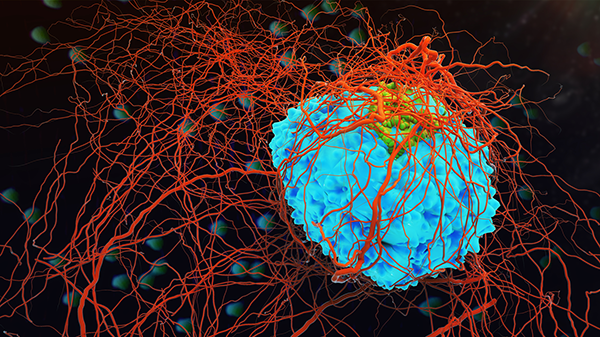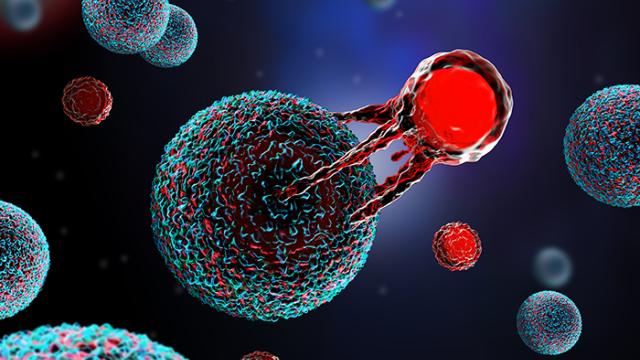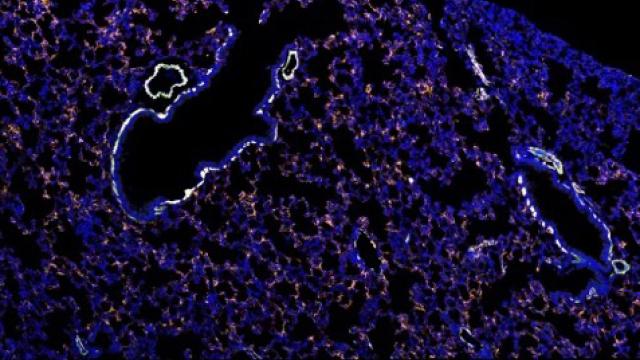Understanding the fundamentals of how cancer cells form and proliferate has been crucial to cancer treatment and prevention. New areas of basic research will lead to better outcomes for patients.

A cancer cell. New research on how each cell differs from others within a tumor provides a promising avenue for better patient outcomes.
Credit: iStock
Decades of discovery have demonstrated that a deep understanding of the fundamental mechanisms of cancer—how it forms, why it persists and what causes it to spread through the body—leads to better outcomes for patients. New areas of basic cancer research, including how each cell differs from others within a tumor, how the environment in which a tumor grows impacts its progress and how well an individual’s immune system mounts a defense, will yield improved outcomes for patients.
Now, cancer researchers are using new tools, technologies and ways of thinking to develop an even more sophisticated understanding of cancer mechanisms. They are exploring subtle variations that impact cancer cells’ behaviors—not just between different patients or cancer types but even among the different cells that make up an individual tumor. At the same time, researchers are broadening their focus, looking beyond tumors to learn how factors elsewhere in the body impact a patient’s disease.
Until now, studies of cancer biology have largely focused on what makes tumor cells different from healthy cells. But it has become clear that not all tumor cells—even within a single tumor—are the same. Only a small fraction of a tumor’s cells may have the capacity to divide and sustain the tumor’s growth.
This variability has enormous clinical consequences, and we now know that it will be important to understand human cancer on a cell-by-cell basis. Using recently developed methods of high-throughput analysis, researchers can now study the DNA, RNA and proteins of thousands of individual cells to characterize this heterogeneity and investigate how it affects tumor growth, metastasis and patients’ response to treatment.
It has also become evident that a tumor’s growth depends on more than the makeup of its own cells. The microenvironment in which a tumor grows, as well as the vigor with which the body’s immune system recognizes and attacks cancers, are just as critical. A major challenge is to understand the interactions between tumors and their microenvironments. Ultimately, we will need to decode the signals that tumors send to nearby immune cells as well as define which aspects of a tumor’s surroundings help determine whether it stays small and benign or is allowed to grow unchecked and spread.
Although there is still much to learn about the cellular changes that drive cancer, new genomic and computational technologies have greatly accelerated the search. There is now the capacity to characterize and compare thousands of patient tumors, enabling researchers to identify factors that influence cancer risk even if they are rare or when their individual impact is relatively small. Uncovering these factors promises to point us toward important cancer pathways and suggest new opportunities for intervention.
Building on CCR’s long-standing strong portfolio of basic research and the ability of CCR principal investigators to freely pursue fundamental questions in biology, our investigators are well positioned to continue elucidating the basic cellular mechanisms that underlie all types of cancer. We are also exploring the mechanisms that drive rare but genetically well-defined tumors, which may serve as model systems to understand more globally applicable cancer mechanisms. Accelerated by the latest technologies, investigations of basic mechanisms of cancer promise to uncover new and improved diagnostic and therapeutic approaches, just as they have in the past.


